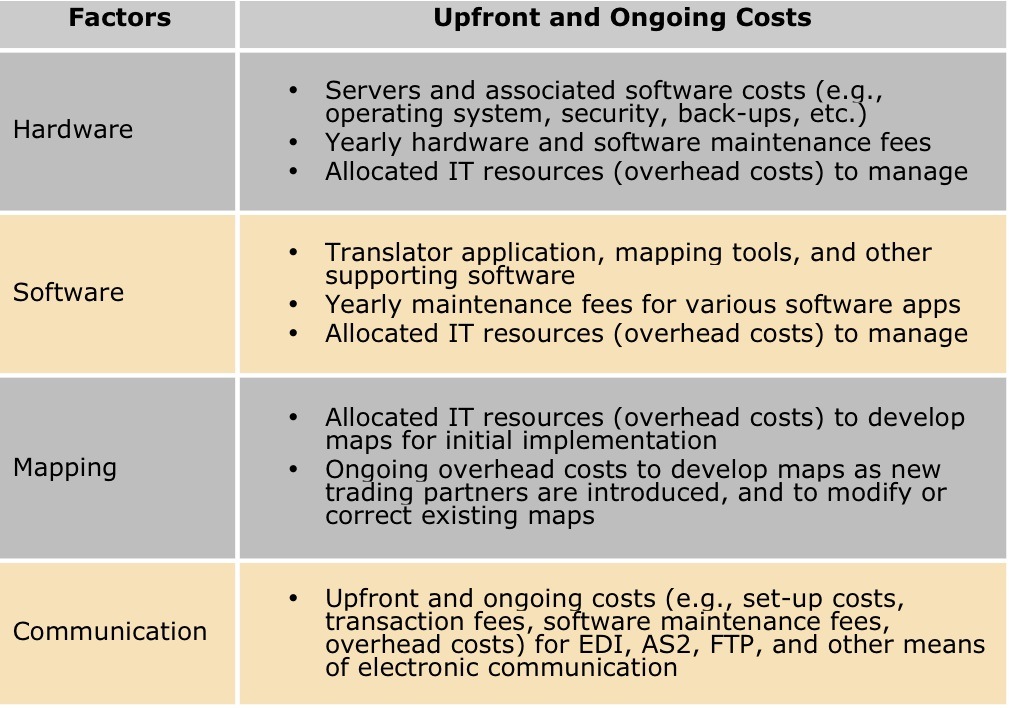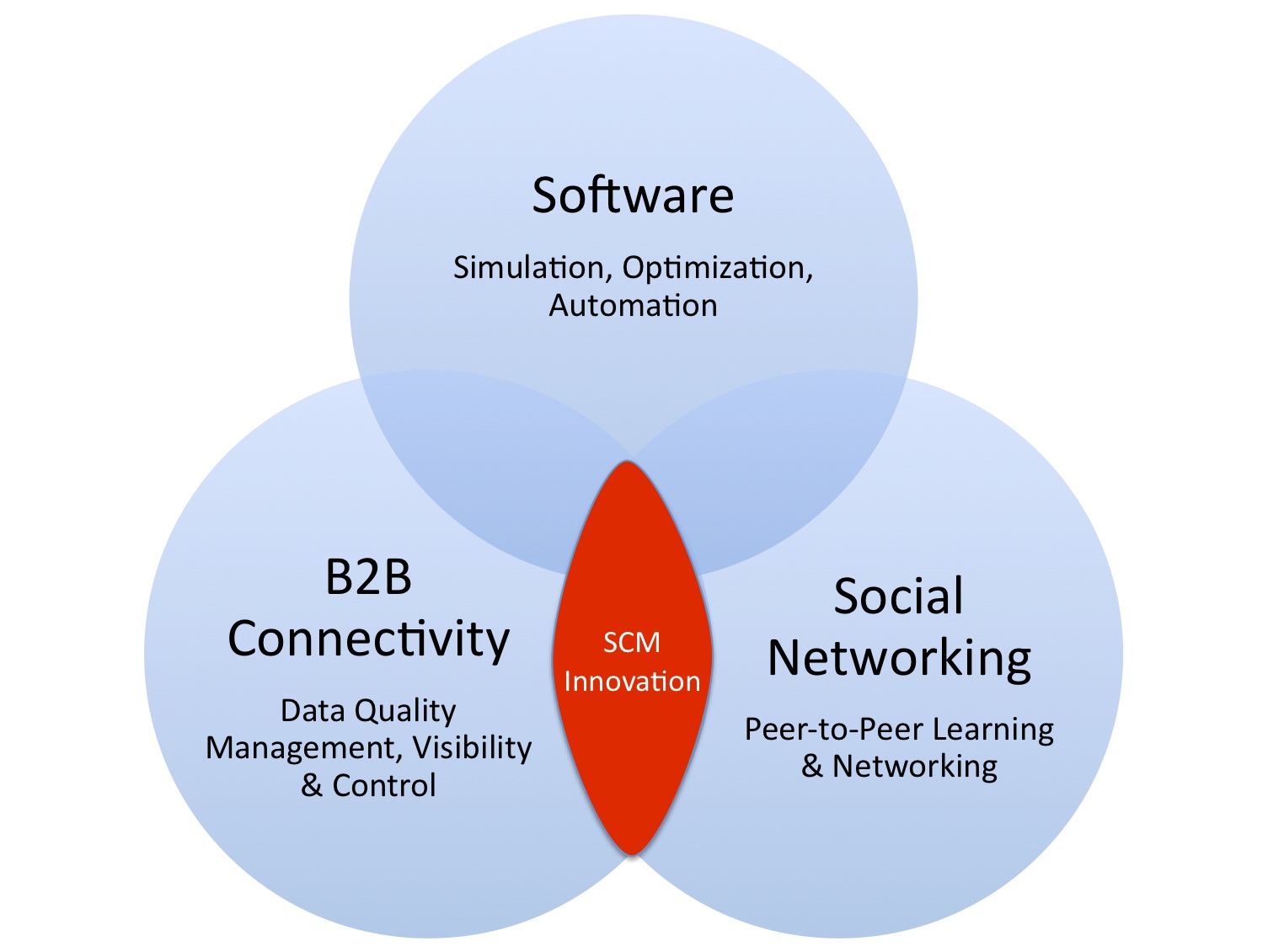How will you establish and manage electronic communication with carriers and other trading partners?
That is one of the most important, yet often overlooked, questions shippers should ask before implementing a Transportation Management System — specifically if they’re implementing a traditional, behind-the-firewall solution.
Historically, one of the most labor-intensive and time-consuming aspects of a traditional TMS implementation is network connectivity — i.e., establishing electronic communication with carriers, suppliers, logistics service providers, and other external trading partners. And since these trading partner networks are continuously changing, establishing and maintaining connectivity with hundreds or even thousands of partners is an ongoing challenge — and cost factor. Therefore, companies must take into account the time, cost, and resources required, upfront and on an ongoing basis, to enable and manage a connectivity network.

How long does it take you to onboard a new carrier or trading partner, and how much does it cost? How often do you have to onboard or deactivate trading partners? How often do you have to modify data maps, how much time does it take, and at what cost?
The bottom line is that network connectivity is not a core competency for many companies, which is why software-as-a-service (SaaS) solutions, which come with a built-in network of carriers and trading partners, have been gaining traction in the industry (see my recent conversation with Evan Puzey from Kewill on The Network Effect in TMS).
It’s also a big reason why SAP and Descartes formally announced their partnership this morning focused on TMS connectivity (attendees of Descartes’ user conference last month were given a sneak peak of this announcement). Here are some details from the press release:
Descartes Systems Group…announced that it has signed a software development cooperation agreement with SAP SE [that] provides customers with an end-to-end business-content network for logistics collaboration and connectivity by creating a logistics message exchange between Descartes’ cloud-based Global Logistics Network (GLN) and the SAP® Transportation Management (SAP TM) application.
Descartes’ GLN is one of the world’s most extensive logistics electronic communications networks, connecting a global community of more than 220,000 parties in more than 160 countries. Designed for logistics operations, it takes into account the unique requirements of the different transportation modes and regional messaging standards critical to successful management of the inter-enterprise flow of data and documents that track and control shipments, inventory, assets and people in motion. In addition, Descartes’ GLN supports commercial, customs and product information messaging essential to global operations.
Also as part of the agreement, Descartes will provide GLN-based messaging and filing services for cross-border security filings such as ICS and ACE and transit, export and import declarations for forwarders and brokers. These services will leverage the transportation information created by SAP TM and provide filing status updates to SAP TM for improved shipment visibility.
When SAP acquired Ariba more than three years ago, I envisioned SAP taking a bold step toward becoming a broader network-based solution provider, especially in the supply chain and logistics realm. It was certainly the vision presented at the Ariba LIVE 2013 conference, where Sanish Mondkar, who was Executive Vice President and Chief Product Officer at Ariba at the time, discussed Ariba’s plans to expand into supply chain, logistics, and inventory management processes (see my blog post and video interview with Mondkar). That expansion has been slow to materialize, especially in transportation management, where the nuts and bolts of building and maintaining a high-transaction connectivity network with carriers and 3PLs is arguably different than what’s involved with building and maintaining a procurement network.
SAP and Descartes (a Talking Logistics sponsor) have already been working together, including in the Global Trade Management (GTM) space following Descartes’ acquisition of Customs Info and MK Data Services which provide content to SAP’s GTM solution.
We’ll have to see how this partnership evolves over time, but on paper, it’s a win for both companies and customers. For Descartes, it opens the door to a large customer base with a growing TMS presence; it’s an opportunity to increase the number of shippers and logistics service providers on its Global Logistics Network, and increase the volume of transactions flowing through it. For SAP, it strengthens its competitive position against software-as-a-service TMS providers, at least from a network connectivity standpoint. And for SAP customers, this partnership provides them with an alternative to building and maintaining their own connectivity network, which as I discussed above, is a costly, time-consuming, and ongoing effort — and something that most manufacturers and retailers are not good at.
Despite the competitive implications, this announcement is also a win for all network-based solution providers because it raises awareness in the market about the unique benefits and value proposition of trading partner networks. It underscores a point I’ve been making for years — that software is not enough, that the greatest opportunities for supply chain innovation moving forward reside at the intersection of Software, B2B Connectivity, and Social Networking. And as we’ve seen over the years, and this announcement demonstrates, TMS continues to lead the way on this front.

For related commentary, see:










